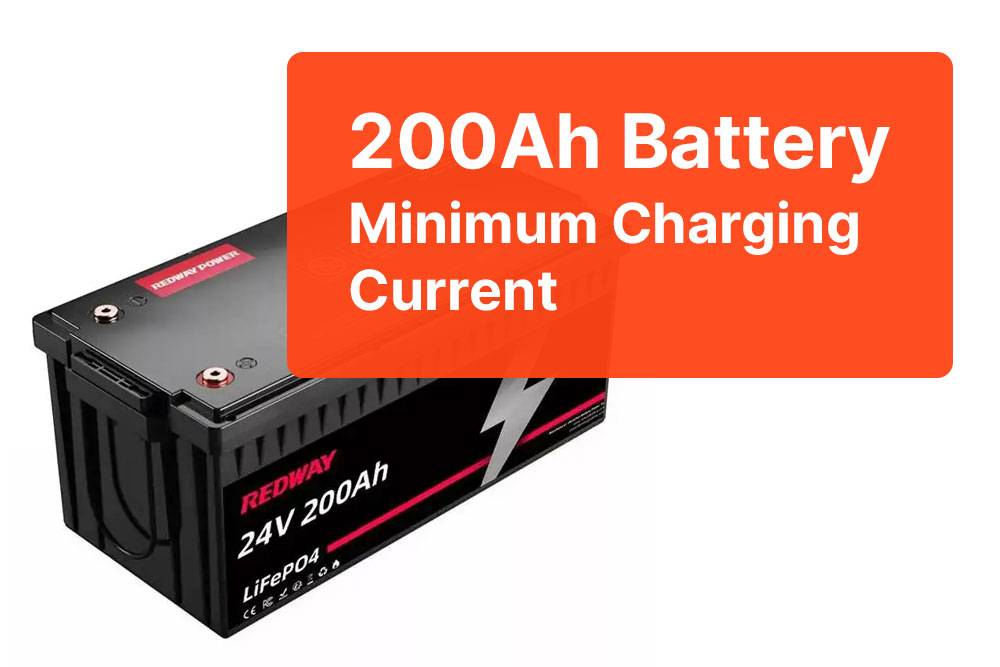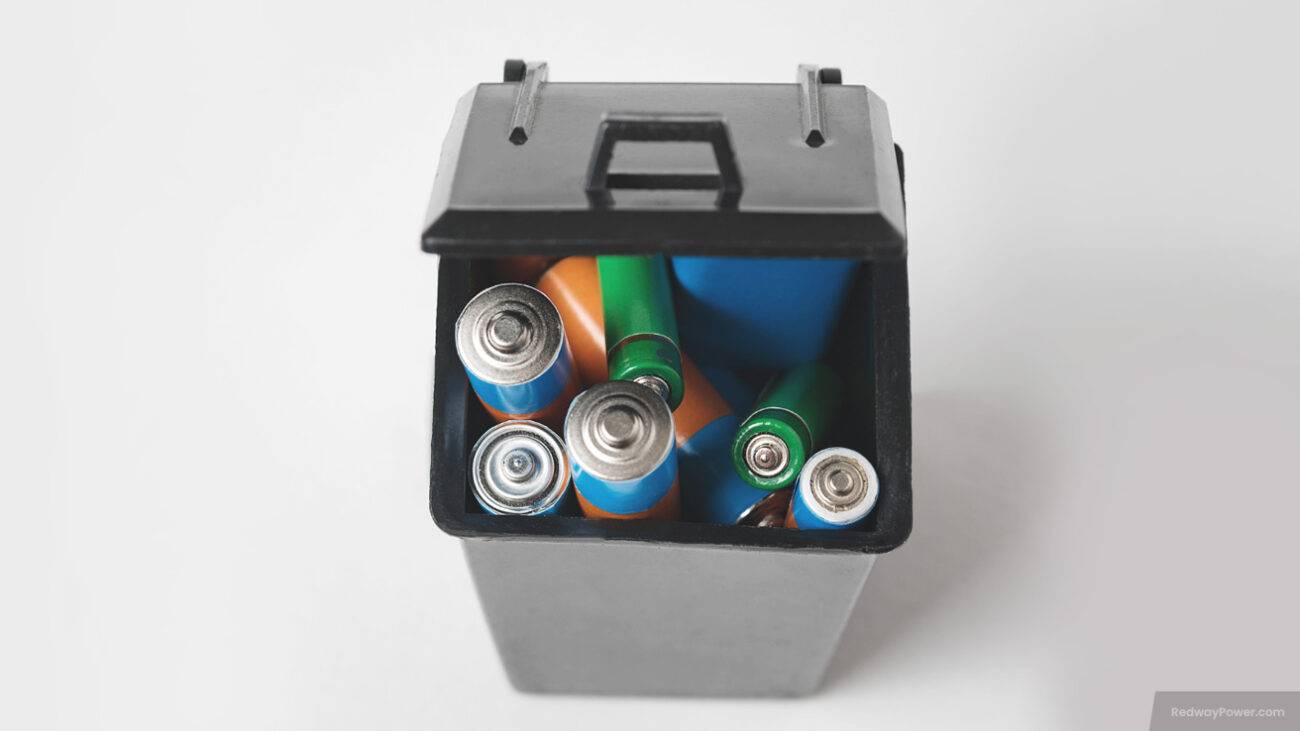
Blog
How to Determine the Minimum Charging Current for a 200Ah Battery

Charging a 200Ah battery requires understanding its minimum charging current, which is typically set at 10% of its capacity, equating to 20 amps. This ensures efficient charging and prolongs battery life by preventing undercharging or overcharging.
Table of Contents
ToggleHow is Minimum Charging Current Calculated for a 200Ah Battery?
The minimum charging current for a 200Ah battery is typically calculated as 10% of its capacity, which equals 20 amps. This ensures the battery receives adequate energy during charging, optimizing its performance and lifespan while preventing undercharging.
Wholesale lithium golf cart batteries with 10-year life? Check here.
The minimum charging current for a 200Ah battery is calculated by taking 10% of its total capacity. For a 200Ah battery, this would be:
Minimum Charging Current = 10% of 200Ah = 20 amps.
This ensures that the battery receives enough power to charge effectively without being overburdened by too high a current. Charging at this rate helps to avoid undercharging, which could negatively impact the battery’s performance and lifespan. Charging at the proper current ensures efficient energy delivery while maintaining the battery’s overall health.
Chart: Minimum Charging Current Calculation
Want OEM lithium forklift batteries at wholesale prices? Check here.
| Battery Capacity (Ah) | Minimum Charging Current (A) |
|---|---|
| 100 | 10 |
| 150 | 15 |
| 200 | 20 |
| 300 | 30 |
What Are the Factors Influencing Minimum Charging Current?
The minimum charging current for a 200Ah battery can be influenced by several key factors, each impacting how efficiently the battery charges:
-
Battery Chemistry: Different battery types, such as lead-acid or lithium-ion, have distinct charging characteristics. For example, lithium-ion batteries generally require more controlled charging currents, while lead-acid batteries can handle higher currents.
-
Temperature: Temperature plays a significant role in charging efficiency. High temperatures can increase charging efficiency, while low temperatures may reduce it, requiring a lower charging current to avoid damaging the battery.
-
Charge Time: If you need faster charging, higher currents might be necessary. However, slower charging using lower currents is often more beneficial for battery health in the long term.
-
Manufacturer Guidelines: Always refer to the manufacturer’s guidelines, as they provide specific charging current recommendations tailored to the battery’s design, optimizing both performance and lifespan.
By considering these factors, you can adjust the charging current to maintain the battery’s health and efficiency.
How Does Battery Type Affect Minimum Charging Current Requirements?
Battery type significantly impacts minimum charging current needs. For example, lead-acid batteries generally require a minimum of 10% of their capacity, while lithium batteries may have different ratios based on manufacturer specifications, often ranging from 20% to 30%.
The type of battery significantly affects its charging characteristics:
- Lead-Acid Batteries: Typically require a minimum of 10% of their capacity. For example, a 200Ah lead-acid battery would need at least 20A.
- Lithium-Ion Batteries: Often allow for higher currents and may recommend charging at up to 30% of their capacity, which translates to 60A for a 200Ah lithium-ion battery.
Choosing the right charger based on battery type is crucial to prevent damage and ensure longevity.
Why is Optimal Charging Important for a 200Ah Battery?
Optimal charging is vital for a 200Ah battery because it ensures the battery operates at its full potential and extends its lifespan. Both undercharging and overcharging can cause significant damage:
-
Undercharging: For lead-acid batteries, insufficient charging can lead to sulfation, a process where lead sulfate crystals form on the battery plates. This reduces the battery’s capacity and efficiency, preventing it from fully charging in the future.
-
Overcharging: Charging beyond the recommended limits can lead to overheating, especially in lithium-ion batteries, which can cause internal damage or degradation of cells, leading to shorter battery life and even dangerous conditions.
By maintaining the recommended minimum charging current, you can prevent these issues, ensuring the battery operates efficiently, retains its capacity, and lasts longer. Proper charging is essential for maximizing the performance and longevity of the battery.
How Can You Ensure Efficient Charging of a 200Ah Battery?
To ensure efficient charging of a 200Ah battery, use a charger that meets or exceeds the minimum current requirement. Monitor the charging environment for temperature control and follow manufacturer guidelines regarding voltage and current settings.
To ensure efficient charging:
- Use an Appropriate Charger: Select one that matches or exceeds the minimum current requirement.
- Monitor Temperature: Ensure that the environment is suitable for optimal performance.
- Follow Manufacturer Guidelines: Adhere to specifications provided by the manufacturer regarding voltage and current settings.
These practices will help maintain optimal performance and extend battery life.
To ensure efficient charging of a 200Ah battery, it’s crucial to use a charger that meets or exceeds the minimum charging current requirements. This ensures the battery receives the appropriate amount of power without being undercharged or overcharged, which can cause long-term damage. Using a charger specifically designed for your battery type, whether lead-acid, lithium-ion, or another chemistry, ensures compatibility and maximizes performance.
Additionally, temperature plays a significant role in charging efficiency. The environment should be maintained within an optimal temperature range to prevent any degradation or loss of performance. Extreme temperatures, either too high or too low, can impact charging speed and battery health. Following the manufacturer’s guidelines regarding voltage and current settings is also essential, as they are designed to suit the battery’s unique chemistry. By adhering to these practices, you can help extend the battery’s lifespan and maintain its reliable performance.
What Are the Risks of Insufficient Charging Current?
Insufficient charging current can lead to undercharging, resulting in sulfation in lead-acid batteries or reduced performance in lithium batteries. This can decrease overall capacity, shorten battery life, and potentially cause damage to the battery over time.
Charging with insufficient current can lead to several risks:
- Reduced Capacity: The battery may not reach full charge, leading to decreased performance.
- Sulfation in Lead-Acid Batteries: This condition occurs when lead sulfate crystals form on plates due to prolonged undercharging.
- Increased Cycle Time: Longer charge times can be inconvenient and inefficient.
Understanding these risks emphasizes the importance of adhering to recommended charging practices.
Insufficient charging current can cause significant issues for batteries, leading to undercharging. For lead-acid batteries, prolonged undercharging can result in sulfation, where lead sulfate crystals form on the battery plates. This process reduces the battery’s overall capacity, making it less efficient and unable to hold a full charge. In lithium batteries, insufficient charging can lead to reduced performance and a shortened lifespan. Over time, this can result in the battery failing to deliver the expected power output.
Additionally, undercharging increases cycle time, meaning the battery takes longer to charge. This can be inefficient and inconvenient, especially in applications where quick recharging is necessary. To avoid these risks, it’s essential to provide the battery with the recommended minimum charging current as per the manufacturer’s specifications. By following proper charging practices, you can preserve the battery’s health and longevity, ensuring optimal performance over time.
How Can You Choose the Right Charger for a 200Ah Battery?
To choose the right charger for a 200Ah battery, select one that provides at least 20 amps (10% of capacity) for optimal performance. Consider the battery type and consult manufacturer specifications to ensure compatibility with charging requirements.
When selecting a charger:
- Determine the type of battery (lead-acid or lithium).
- Ensure it provides at least 20A for lead-acid or up to 60A for lithium-ion batteries.
- Look for features such as adjustable settings and temperature compensation.
Using an appropriate charger helps maintain battery health and efficiency.
Industrial News
Recent developments in battery technology emphasize advancements in fast-charging capabilities and improved safety features across various chemistries. Manufacturers are increasingly focusing on optimizing charging processes to enhance efficiency and longevity, particularly in lithium-ion batteries used in electric vehicles and renewable energy storage systems. These innovations aim to meet growing consumer demands while addressing environmental concerns related to battery disposal and recycling.
Redway Power Expert Views
“Charging practices are crucial not only for immediate performance but also for long-term health,” states an expert from Redway Power. “Understanding your specific battery type and adhering to recommended currents can significantly enhance lifespan and reliability.” This insight highlights the importance of informed decision-making when it comes to selecting chargers and managing battery maintenance effectively.
Frequently Asked Questions About Charging a 200Ah Battery
- What happens if I charge my battery with too low of a current?
Charging with too low of a current can lead to undercharging, resulting in reduced capacity and potential sulfation in lead-acid batteries. - Can I use any charger for my lithium-ion battery?
While many chargers are compatible, ensure that they are specifically designed for lithium-ion batteries to prevent damage from incorrect voltage or current levels. - How long does it take to charge a 200Ah battery?
Charging time varies based on current; using a 20A charger, it would take approximately 10 hours, while using lower currents will extend this time significantly.




